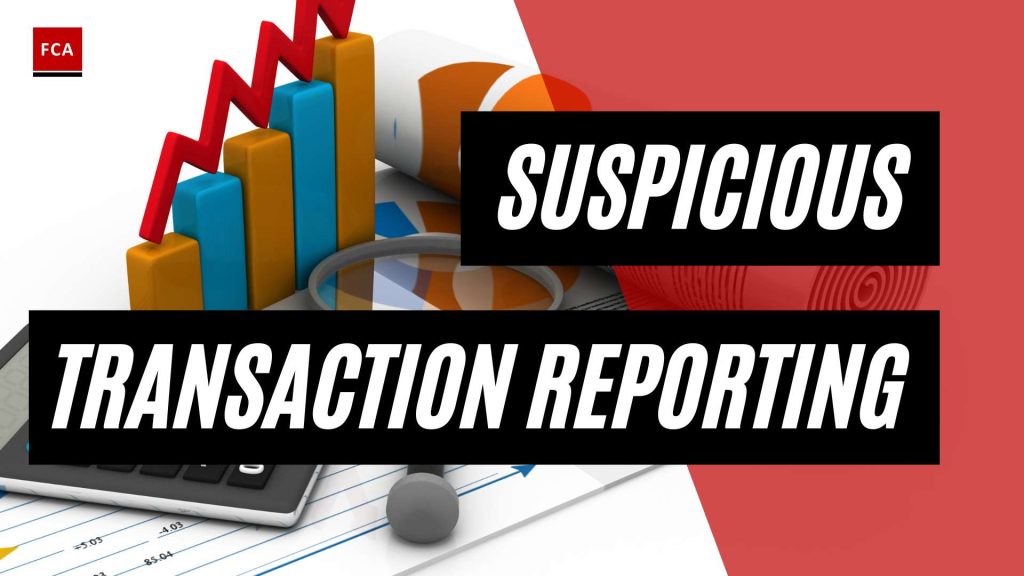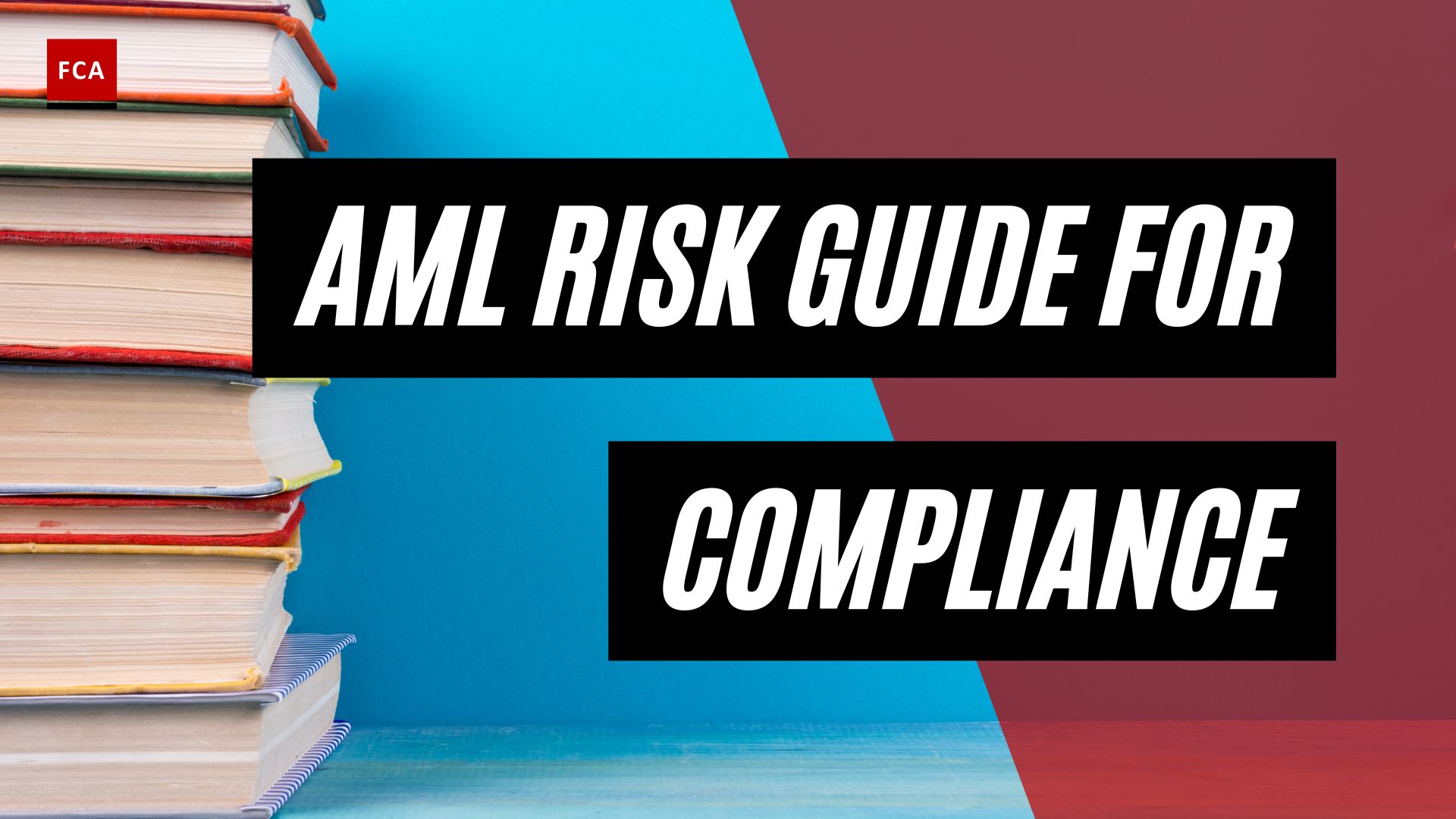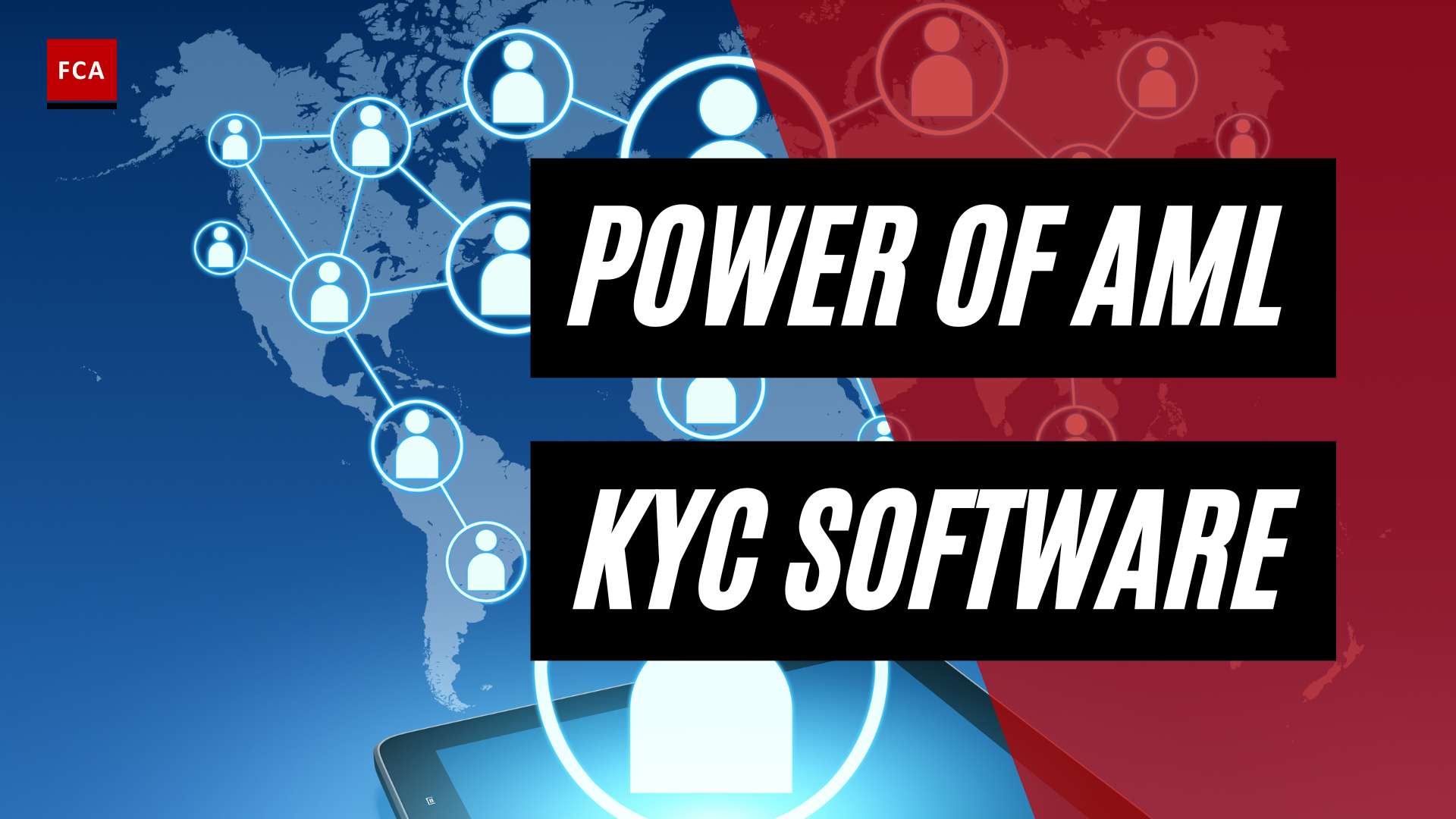Understanding Suspicious Transaction Reporting
In the fight against financial crime, suspicious transaction reporting plays a crucial role in identifying and preventing illicit activities such as money laundering, theft, tax evasion, and financial fraud. Financial institutions have a legal and moral obligation to report suspicious activity to the appropriate authorities, contributing to the overall integrity and security of the financial system.
Importance of Suspicious Transaction Reporting
The importance of suspicious transaction reporting cannot be overstated. It enables financial institutions to play an active role in combating financial crime, protecting both themselves and the wider economy. By monitoring and reporting suspicious transactions, financial institutions contribute to the detection and prevention of illicit activities.
American financial institutions, for instance, identified more than $2 trillion of suspicious activities between 1999 and 2017, which is equivalent to the annual GDP of Italy, the country with the eighth-highest GDP in the world (Unit21). These reports provide valuable insights into potential money laundering schemes, terrorist financing, fraud, and other illicit activities. They help financial intelligence units and law enforcement agencies identify and investigate suspicious activities, leading to the disruption of criminal networks and the recovery of illicit proceeds.
Legal Obligations for Financial Institutions
Financial institutions are legally bound to report suspicious transactions under various regulatory frameworks. In the United States, the Bank Secrecy Act (BSA) serves as a cornerstone for anti-money laundering efforts. Enacted in 1970, the BSA requires financial institutions to monitor and report signs of suspicious activity within 30 days. This includes transactions that serve no business or legal purpose and provide no reasonable explanation. By adhering to the reporting requirements of the BSA, financial institutions fulfill their legal obligations and contribute to the collective efforts to combat financial crime.
Financial institutions must file suspicious activity reports (SARs) to the appropriate regulatory authority, such as the Financial Crimes Enforcement Network (FinCEN) in the United States, within the designated reporting timeline. SARs provide detailed information about the suspicious activity, including the nature of the transaction, individuals involved, and any additional supporting evidence. These reports serve as a crucial tool for authorities in identifying and investigating potential financial crimes.
Failure to comply with suspicious transaction reporting obligations can have serious consequences for financial institutions. Penalties may include significant fines, reputational damage, and loss of trust from regulators, clients, and the public. Therefore, it is vital for financial institutions to establish robust AML policies and procedures and invest in appropriate systems and technologies to effectively detect and report suspicious transactions.
By understanding the importance of suspicious transaction reporting and fulfilling their legal obligations, financial institutions contribute to a safer and more secure financial system. The collective efforts of financial institutions, regulatory authorities, and law enforcement agencies are essential in combating financial crime and protecting the integrity of the global economy.
Detecting Suspicious Activity
In the fight against financial crimes, detecting and reporting suspicious activity is crucial for financial institutions. By monitoring transactions and identifying potential red flags, these institutions play a vital role in preventing money laundering and other illicit activities.
Monitoring Transactions and Red Flags
Financial institutions need to diligently monitor the size and types of transactions occurring within their systems to identify suspicious activity. This includes transactions that serve no business or legal purpose and provide no reasonable explanation (Unit21). By establishing robust transaction monitoring systems, institutions can flag activities that deviate from expected patterns and trigger further investigation.
The concept of red flags is a useful tool for identifying suspicious activity. Red flags are indicators that highlight any transaction, activity, or customer behavior associated with a certain level of risk. They can help financial institutions identify potential areas of concern and prompt further scrutiny. Examples of red flags include:
- Large cash deposits or withdrawals that are inconsistent with a customer’s profile or business operations.
- Frequent and sudden transfers of funds to high-risk jurisdictions known for money laundering activities.
- Rapid movement of funds between multiple accounts or complex transaction patterns designed to obscure the source or destination of funds.
- Transactions involving politically exposed persons (PEPs) or individuals and entities associated with high-risk jurisdictions (Sanction Scanner).
By paying attention to these red flags, financial institutions can enhance their ability to identify suspicious transactions and report them appropriately.
Role of Financial Institutions
Financial institutions have a crucial role to play in the detection of suspicious activity. They are on the front lines of the financial system, interacting directly with customers and processing numerous transactions daily. As part of their responsibility to combat money laundering and other financial crimes, financial institutions must:
-
Implement robust transaction monitoring systems: Financial institutions should deploy transaction monitoring systems that can analyze and flag potentially suspicious activity based on predefined rules and patterns. These systems should be regularly updated to adapt to evolving threats and new money laundering schemes.
-
Conduct customer due diligence: Financial institutions must have effective customer identification programs in place to verify the identity of their customers and understand the nature of their transactions. This helps in detecting any abnormal or suspicious behavior.
-
Report suspicious transactions: When a financial institution detects a suspicious transaction, they are obligated to file a Suspicious Activity Report (SAR) with the appropriate regulatory authorities. SARs provide detailed information about the suspicious activity, aiding financial intelligence units (financial intelligence units) in their investigations.
It is important for financial institutions to invest in the necessary resources, technologies, and trained personnel to fulfill their role effectively. By playing an active part in detecting and reporting suspicious activity, financial institutions contribute to the overall integrity and security of the financial system.
In the next section, we will explore the process of filing a Suspicious Activity Report (SAR) and the timeline for reporting.
Suspicious Transaction Reporting Process
To combat financial crimes and protect the integrity of the financial system, financial institutions have a legal and moral obligation to report suspicious activity to authorities. This process is known as suspicious transaction reporting. By promptly reporting transactions that are suspected to be illegal or involve money laundering, financial institutions play a crucial role in preventing financial crimes. Two key components of the suspicious transaction reporting process are filing a Suspicious Activity Report (SAR) and adhering to the timeline for reporting.
Filing a Suspicious Activity Report (SAR)
Financial institutions are required to file a Suspicious Activity Report (SAR) with the appropriate regulatory bodies to report transactions that may indicate criminal activity. In the United States, financial institutions submit SARs to the Financial Crimes Enforcement Network (FinCEN) within 30 days of detecting the suspicious activity (Unit21). In Canada, reporting entities (REs) are required to submit a suspicious transaction report (STR) to the Financial Transactions and Reports Analysis Centre of Canada (FINTRAC) when there are reasonable grounds to suspect money laundering or terrorist financing offenses.
The SAR should include comprehensive information about the suspicious transaction, such as the individuals or entities involved, amounts, dates, and any other relevant details. Financial institutions need to ensure that the SAR is accurate, complete, and provides sufficient information to support the suspicion of illegal activity. By submitting SARs, financial institutions assist regulatory bodies and financial intelligence units in their efforts to investigate and combat financial crimes.
Timeline for Reporting
Timeliness is crucial in the suspicious transaction reporting process. Financial institutions must adhere to specific timelines for reporting to ensure that potential financial crimes are addressed promptly. In the United States, SARs must be submitted to FinCEN within 30 days of detecting the suspicious activity (Unit21). Prompt reporting allows law enforcement agencies and regulatory bodies to take necessary actions to prevent further illicit activities and protect the financial system.
In Canada, reporting entities are required to submit an STR to FINTRAC as soon as practicable after the grounds to suspect a money laundering or terrorist financing offense arise. The exact timeline for reporting may vary depending on the jurisdiction and the nature of the suspicious activity. It is essential for financial institutions to have robust monitoring systems and AML policies and procedures in place to ensure timely detection and reporting of suspicious transactions.
By following the proper procedures for filing SARs and adhering to the designated timelines, financial institutions contribute to the prevention and detection of financial crimes. Their cooperation and vigilance are crucial in safeguarding the financial system’s integrity and protecting against money laundering and other illicit activities.
Tools and Technologies for Suspicious Transaction Reporting
To effectively combat money laundering and financial crimes, financial institutions rely on various tools and technologies for suspicious transaction reporting. These advanced solutions aid in automating processes, enhancing efficiency, and improving the accuracy of reporting. Two key tools commonly used are automated verification flows and compliance solutions for Suspicious Activity Report (SAR) filing.
Automated Verification Flows
Automated verification flows play a crucial role in the detection and prevention of suspicious transactions. These flows allow financial institutions to implement additional checks at various stages of the user account journey, triggering alerts for potential illicit activities or fraud. By leveraging technologies like artificial intelligence and machine learning, these verification flows can quickly analyze large amounts of data and identify any red flags or anomalies.
One such solution offered by Persona, for example, is capable of screening against global sanction, warning, and politically exposed persons (PEP) lists, as well as automating negative news checks across millions of articles. It also enables customizable media checks to identify potential suspicious activities or fraud through suspicious transaction reporting. These automated verification flows help financial institutions protect accounts, verify user identities, and efficiently identify and report suspicious transactions.
Compliance Solutions for SAR Filing
Compliance solutions specifically designed for SAR filing are essential for financial institutions to meet their regulatory obligations. These solutions streamline the process of filing Suspicious Activity Reports, ensuring compliance with anti-money laundering (AML) regulations.
Persona, for instance, offers a comprehensive compliance solution that enables financial institutions to screen across global sanction and warning lists, as well as thousands of PEP lists. By leveraging these capabilities, financial institutions can identify potential risks associated with transactions and enhance their ability to report suspicious activities. Additionally, Persona’s solution allows for the enrichment of user profiles with social media handles and other identity records, further aiding in the reporting of suspicious transactions and enhancing compliance efforts.
Implementing compliance solutions specifically tailored for SAR filing not only assists financial institutions in meeting their legal obligations, but also ensures a more efficient and streamlined process for reporting suspicious transactions.
By leveraging tools and technologies such as automated verification flows and compliance solutions for SAR filing, financial institutions can strengthen their anti-money laundering measures, improve their ability to detect and report suspicious transactions, and contribute to the overall integrity of the financial system.
Compliance and Penalties
Financial institutions have a legal and moral obligation to report suspicious activity to the appropriate authorities once there is reasonable belief that illicit activity has occurred. Failure to comply with these reporting requirements can result in severe consequences for both the institution and its employees.
Consequences of Non-Compliance
Failing to file a Suspicious Activity Report (SAR) when required can lead to civil and criminal penalties for financial institutions and their employees. The penalties can vary depending on the jurisdiction and the severity of the non-compliance. According to Investopedia, the consequences of non-compliance with suspicious transaction reporting regulations can include:
- Hefty fines: Financial institutions may face significant monetary fines imposed by regulatory authorities. These fines can amount to millions or even billions of dollars, depending on the nature and scale of the non-compliance.
- Legal action: Non-compliance can result in legal action, including lawsuits from affected parties or enforcement actions initiated by regulatory bodies. This can lead to reputational damage and financial loss for the institution.
- Loss of reputation: Failing to report suspicious transactions can tarnish the reputation of a financial institution. It can erode trust among customers, investors, and other stakeholders, potentially leading to a loss of business and market share.
- Regulatory scrutiny: Non-compliance may trigger increased regulatory scrutiny, with authorities conducting investigations and audits to ensure adherence to anti-money laundering (AML) regulations. This can place a strain on the institution’s resources and operations.
- Criminal charges: In some cases, non-compliance with suspicious transaction reporting obligations may lead to criminal charges against responsible individuals within the financial institution. This can result in imprisonment and further damage to the institution’s reputation.
Financial institutions must prioritize compliance with suspicious transaction reporting requirements to mitigate these potential consequences and maintain the integrity of the financial system.
Reporting Entities’ Responsibilities
Reporting entities (REs) and their employees have a crucial role in the suspicious transaction reporting process. They are expected to diligently monitor customer transactions and promptly report any suspicious activity to the appropriate financial intelligence units (financial intelligence units), such as the Financial Crimes Enforcement Network (FinCEN) in the United States and the Financial Transactions and Reports Analysis Centre of Canada (FINTRAC) in Canada.
The responsibilities of reporting entities include:
- Identification and reporting: REs and their employees are required to be vigilant in detecting and identifying suspicious transactions. They must be knowledgeable about the red flags for money laundering and terrorist financing and promptly report any suspicious activity to the designated authorities.
- Timely filing of SARs: Suspicious Activity Reports (SARs) must be filed within the specified timeline after detecting facts that could be indicative of the need to file the report. The timeline for reporting can vary depending on the jurisdiction, but generally, SARs must be submitted within 30 days of the suspicious activity (Office of the Comptroller of the Currency).
- Compliance with AML policies and procedures: REs must establish and maintain robust AML policies and procedures to ensure compliance with suspicious transaction reporting requirements. This includes implementing effective transaction monitoring systems (transaction monitoring systems), customer identification programs (customer identification programs), and sanctions screening procedures (sanctions screening).
By fulfilling their reporting obligations and adhering to AML regulations, reporting entities contribute to the overall security and integrity of the financial system. It is essential for financial institutions to prioritize compliance and establish a strong culture of compliance throughout their organization.
In the next section, we will delve into the guidelines and best practices for suspicious transaction reporting, including red flags for money laundering and terrorist financing, as well as key terms and information for SARs.
Suspicious Transaction Reporting Guidelines
To effectively combat money laundering and terrorist financing, financial institutions must adhere to strict suspicious transaction reporting guidelines. These guidelines help identify potential illicit activities and ensure that the appropriate authorities are notified. Two key aspects of these guidelines are red flags for money laundering and terrorist financing and the key terms and information required for filing Suspicious Activity Reports (SARs).
Red Flags for Money Laundering and Terrorist Financing
Financial institutions need to monitor the size and types of transactions occurring within their systems to identify suspicious activity. This includes transactions that serve no business or legal purpose and provide no reasonable explanation. Some common red flags that may indicate money laundering or terrorist financing include:
- Frequent large cash deposits or withdrawals that are inconsistent with the customer’s profile
- Structuring transactions to evade reporting thresholds
- Rapid movement of funds between accounts or financial institutions
- Transactions involving high-risk jurisdictions or shell companies
- Unusual or complex transactions with no clear economic purpose
- Transactions inconsistent with the customer’s known business or occupation
- Transactions involving politically exposed persons (PEPs) without appropriate due diligence (Unit21)
It’s important for financial institutions to have robust transaction monitoring systems in place to detect these red flags and promptly report any suspicious activities to the relevant authorities. By screening transactions against global sanction and warning lists, as well as politically exposed persons (PEP) lists, financial institutions can enhance their ability to identify potential risks associated with transactions (Sanction Scanner).
Key Terms and Information for SARs
When filing a Suspicious Activity Report (SAR), financial institutions must provide specific information to aid in the investigation of potential money laundering or terrorist financing activities. The following key terms and information are typically required:
-
Customer Information: This includes the customer’s name, address, date of birth, and any other identifying information available. It’s essential to have strong customer identification programs in place to gather accurate and up-to-date customer information.
-
Transaction Details: Financial institutions should provide a detailed description of the suspicious transaction, including the date, time, amount, and involved parties. Any supporting documentation or evidence should also be included.
-
Red Flag Indicators: Financial institutions should clearly outline the red flag indicators observed that led to the suspicion of money laundering or terrorist financing. This helps investigators understand the basis for the report.
-
Additional Information: Any additional information that may be relevant to the suspicious transaction should be included in the SAR. This could include information about the customer’s occupation, source of funds, or any other pertinent details.
By providing accurate and comprehensive information in SARs, financial institutions assist financial intelligence units in their investigations and contribute to the overall effort of combating money laundering and terrorist financing.
Adhering to these suspicious transaction reporting guidelines is essential for financial institutions to fulfill their regulatory obligations and contribute to a secure and transparent financial system. It is also crucial for reporting entities to stay updated on evolving AML policies and procedures to ensure compliance and effective reporting.
Suspicious Transaction Reporting in Different Jurisdictions
The process of reporting suspicious transactions varies across jurisdictions. In this section, we will explore the requirements and procedures for suspicious transaction reporting in the United States and Canada.
Suspicious Transaction Reporting in the United States
In the United States, financial institutions play a crucial role in combating financial crime by reporting suspicious transactions. National banks are required to report known or suspected criminal offenses, transactions over $5,000 involving money laundering, or violations of the Bank Secrecy Act under 12 CFR 21.11. To fulfill this requirement, financial institutions must file a Suspicious Activity Report (SAR) with the Financial Crimes Enforcement Network (FinCEN) using the BSA E-Filing System since April 1, 2013 (OCC – Suspicious Activity Report Program).
Financial institutions are obligated to file a SAR within 30 calendar days of initially detecting facts that may constitute a basis for the report. If no suspect is identified at the time of detection, the filing can be delayed for an additional 30 calendar days to identify a suspect. However, reporting should not be delayed beyond 60 calendar days from the initial detection of a reportable transaction (OCC – Suspicious Activity Report Program).
Failing to file a SAR when required can result in civil and criminal penalties for financial institutions and their employees. SARs are a critical tool in combating financial crime and play a key role in maintaining the integrity of the financial system (Investopedia).
Suspicious Transaction Reporting in Canada
In Canada, the reporting of suspicious transactions is guided by the Proceeds of Crime (Money Laundering) and Terrorist Financing Act (PCMLTFA). Reporting entities (REs), such as financial institutions, are obligated to report suspicious transactions to the Financial Transactions and Reports Analysis Centre of Canada (FINTRAC).
Reporting entities and their employees must report suspicious transactions under the PCMLTFA. If an employee’s employer has not submitted a suspicious transaction report, the employee is expected to report the suspicious transaction to FINTRAC (FINTRAC).
As of June 1, 2021, FINTRAC no longer has the authority to receive information from certain fields of the suspicious transaction report. Reporting entities do not need to implement a system change at this time (FINTRAC).
The reporting timelines in Canada differ from those in the United States. Reporting entities are required to file a suspicious transaction report within 30 calendar days of initially detecting facts that may indicate the need for filing. If no suspect is identified, the filing can be delayed for an additional 30 calendar days to identify a suspect. However, reporting should not be delayed beyond 60 calendar days from the initial detection of a reportable transaction (FINTRAC).
By adhering to the suspicious transaction reporting guidelines in their respective jurisdictions, financial institutions and reporting entities contribute to the prevention and detection of financial crime. The collaboration between financial institutions, regulatory bodies, and financial intelligence units is vital in securing the financial system and safeguarding against money laundering and other illicit activities.









